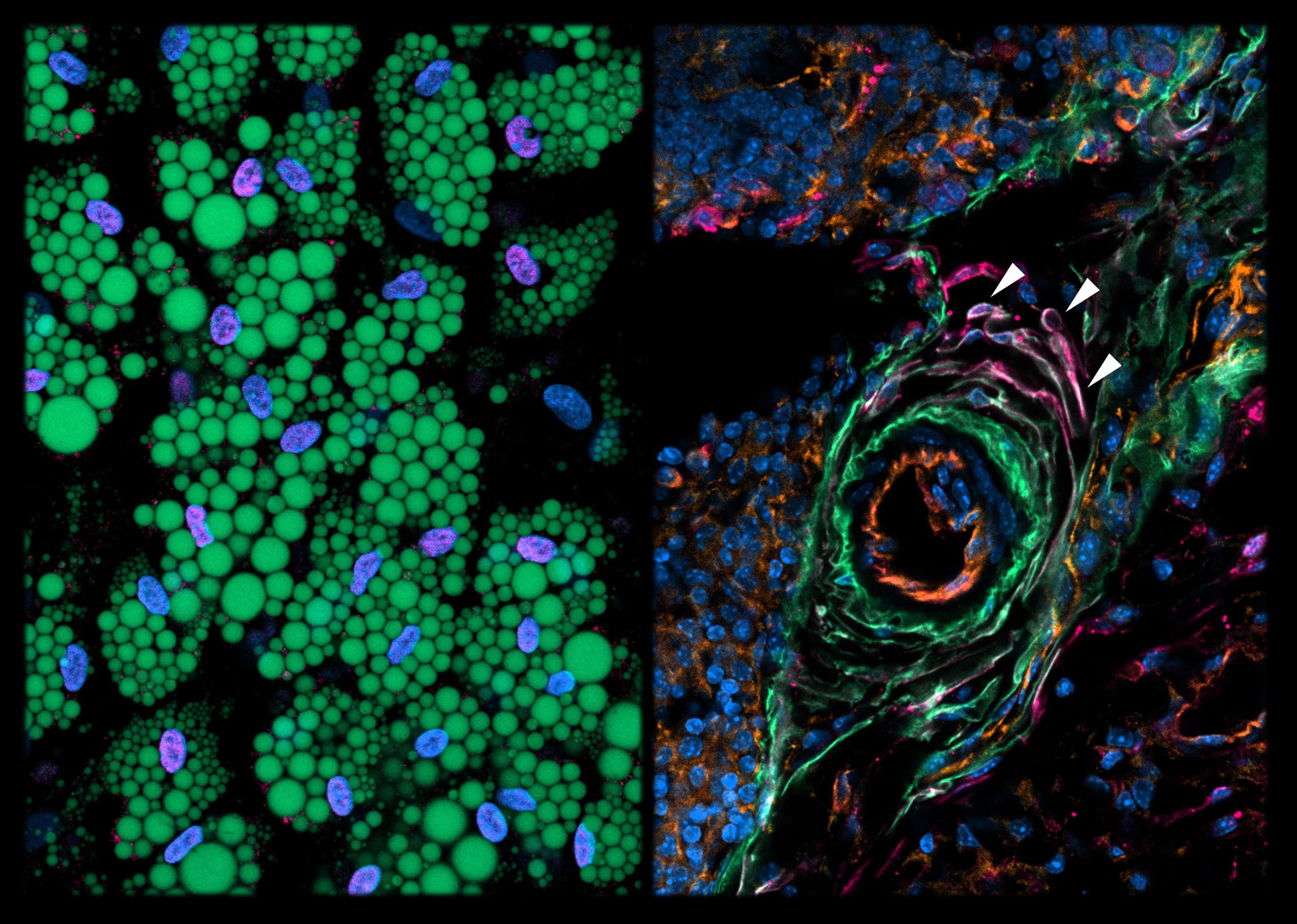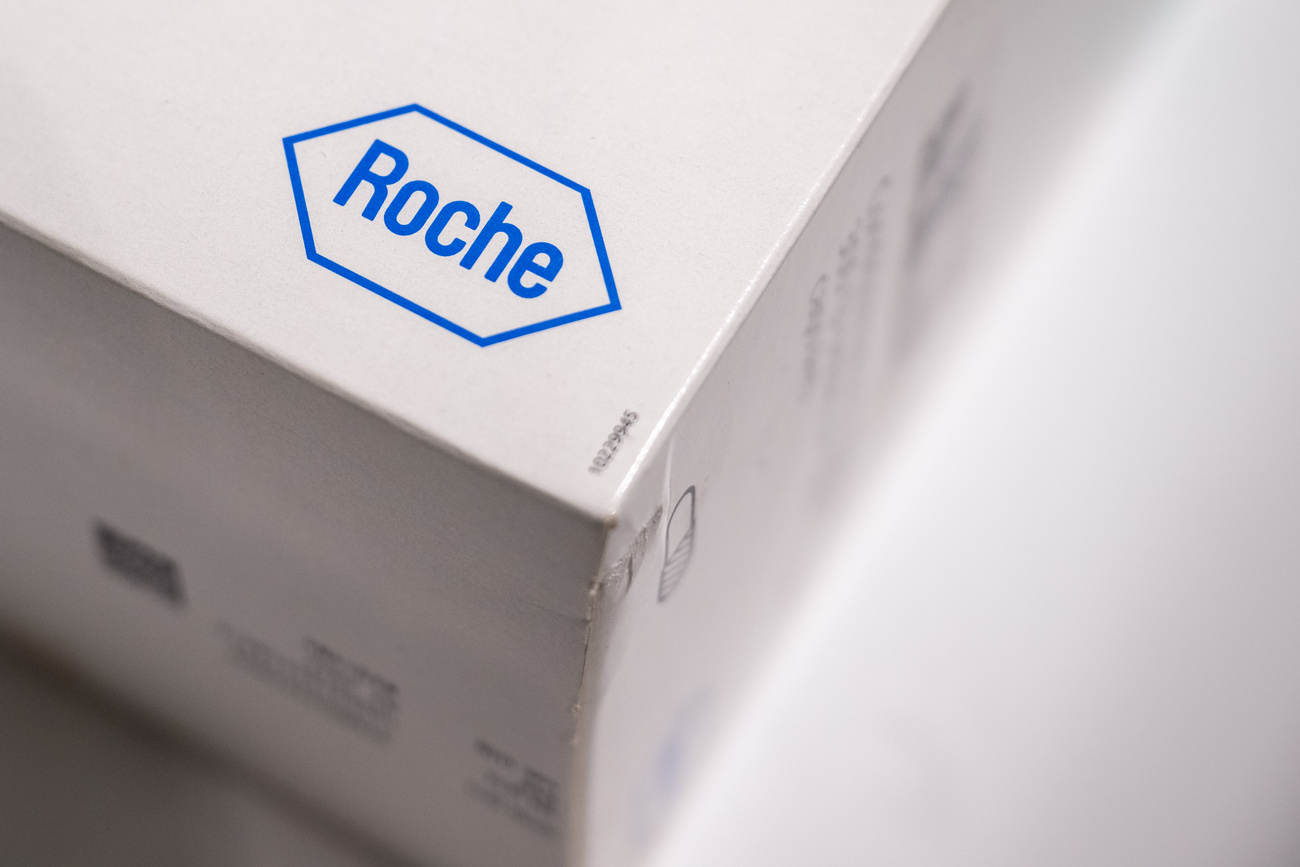
Scientists discover fat-suppressing cell

Researchers in Switzerland have found a new cell type in the body’s fat depots which can actively suppress fat cell formation. It is hoped the discovery could help treat obesity and related diseases like diabetes.
Fat cells, or adipocytes, are key for nutritional and metabolic balance. Adipogenesis – the formation of mature fat cells from their precursor cells – has been linked to obesity and related health problems such as cardiovascular disease and type-2 diabetes.
But it has been hard to identify and find the properties of fat cell precursors, said a statement by the Swiss Federal Institute of Technology Lausanne (EPFL).External link This is because fat tissue contains a large number of stromal cells – connective tissue cells – that are difficult to distinguish using traditional methods like genetic labelling.
In the Swiss study, published in the latest edition of NatureExternal link, scientists from Bart Deplancke’s lab at EPFLExternal link, Christian Wolfrum’s lab at the Federal Technology Institute Zurich (ETH ZExternal linkurich), and the Swiss Stem Cell FoundationExternal link led by Gianni Soldati, used a high-resolution technique called “single cell transcriptomics” to characterise – for the first time – the different types of supportive stromal cells that reside within mature fat depots.
They used this approach to identify several stromal cell subpopulations in the fat tissue of mice. In doing so, they noticed one type of cell in the fat tissue that did not create fat cells, but actively suppressed their creation through a secretory mechanism.
The scientists then looked at human fat, where they discovered a similar mechanism for suppressing fat cell creation. It was seen to be a regulatory cell that appears to be sending signals to the surrounding issue. The researchers named this subpopulation “Aregs” for “adipogenesis-regulatory cells”.
Implications
Understanding Aregs, or their mechanism of action, could have medical implications. In the long run, it could improve the ability to control obesity and insulin sensitivity, and to treat metabolic diseases including type-2 diabetes, the statement said.
“Our work shows that there are still many human cell types that await discovery,” said the ETH Zurich’s Christian Wolfrum. “Several of these may be very important also for medical reasons such as the Aregs that we found in this study.”
“Controlling fat cell formation is not only important for improving metabolic health,” added the EPFL’s Bart Deplancke. “It could also be important for slowing aging, since several tissues, such as bone marrow and muscle, accumulate fat cells over time, which negatively affects their function. Our discovery has therefore widespread biomedical implications and we cannot wait to learn more about these intriguing cells.”
Obesity
Experts say 80% of obese people will develop Type 2 diabetes at some point in their lifetimes. In Switzerland around 12% of the adult population and 4% of children are obese, according to a global study on the health effects of obesity published in 2017. This rate has more than doubled in the past 35 years, the study found.
Recent research has showed however that the number of Swiss children who are overweight or obese is declining, a result of obesity prevention efforts.
Overall, there are an estimated 500,000 people living with diabetes in Switzerland, most of whom have type 2 diabetes, according to diabetesschweizExternal link. Type 2 normally occurs later in life and can be influenced by lifestyle factors. The prevalence of type 2 diabetes has risen dramatically in countries of all income levels in the past decades.

In compliance with the JTI standards
More: SWI swissinfo.ch certified by the Journalism Trust Initiative



























You can find an overview of ongoing debates with our journalists here . Please join us!
If you want to start a conversation about a topic raised in this article or want to report factual errors, email us at english@swissinfo.ch.